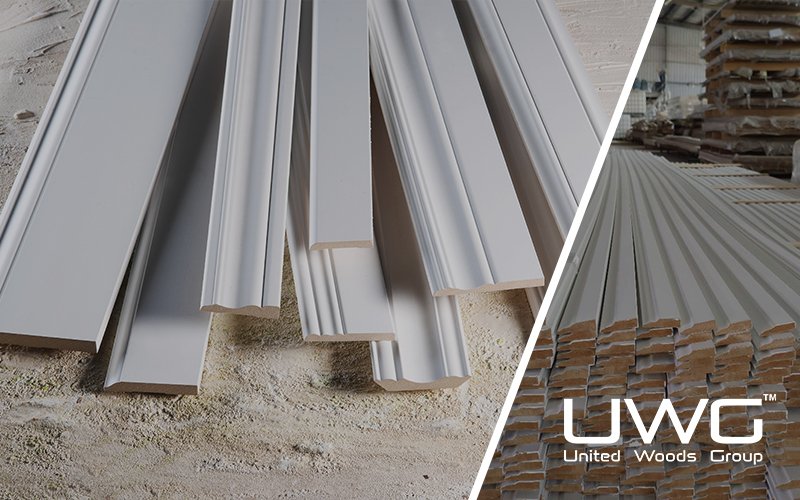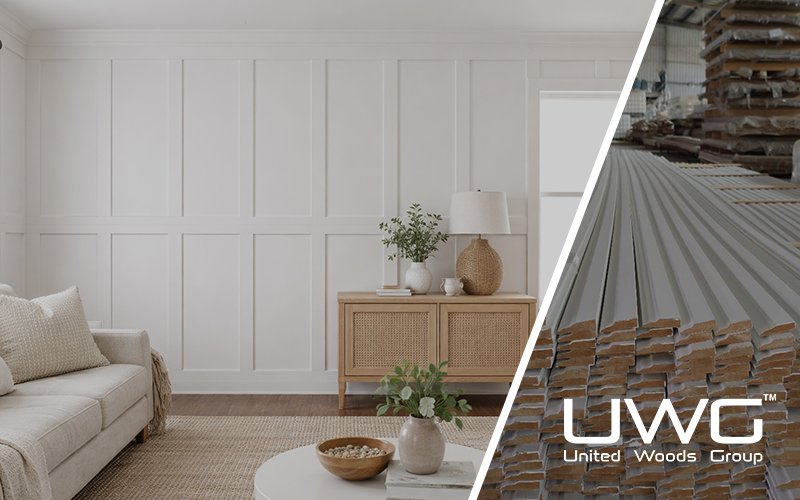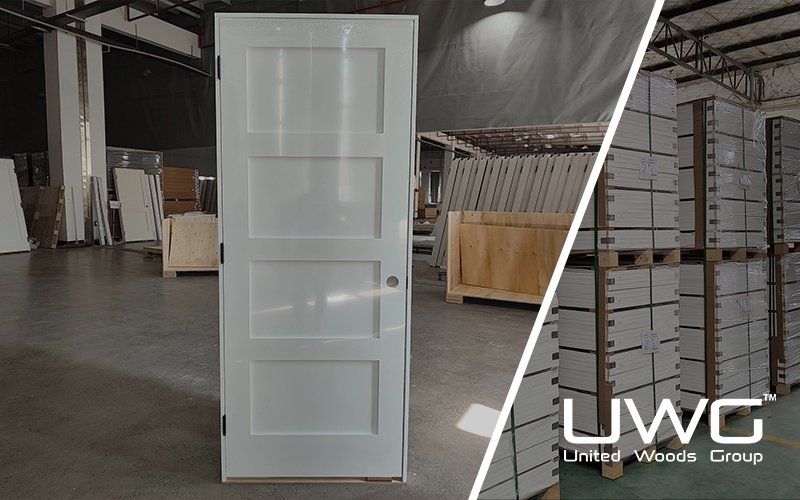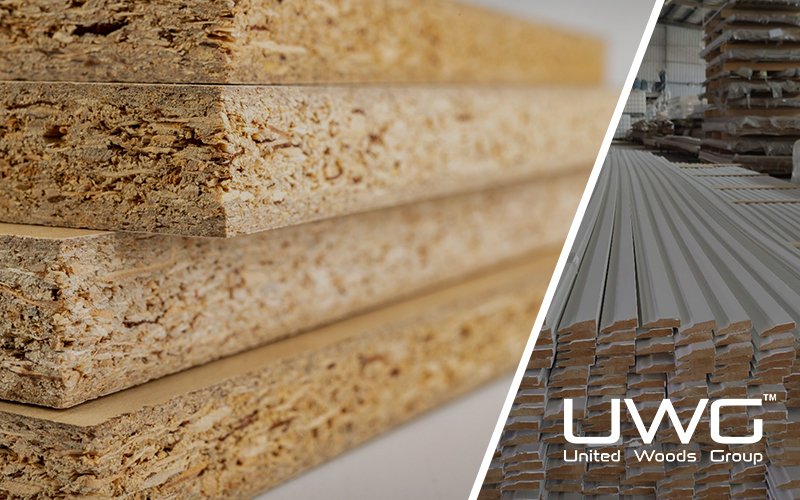When sourcing molded doors for your construction or renovation project, it’s crucial to understand the key factors that influence both the quality and functionality of the doors. Molded doors offer an excellent combination of durability, design flexibility, and cost-effectiveness, making them a popular choice for a variety of spaces. However, selecting the right molded door requires careful consideration of several important factors.
This guide will help you navigate these critical factors—material, dimension, style, finish, and hardware—to make informed decisions and achieve the best results for your project.
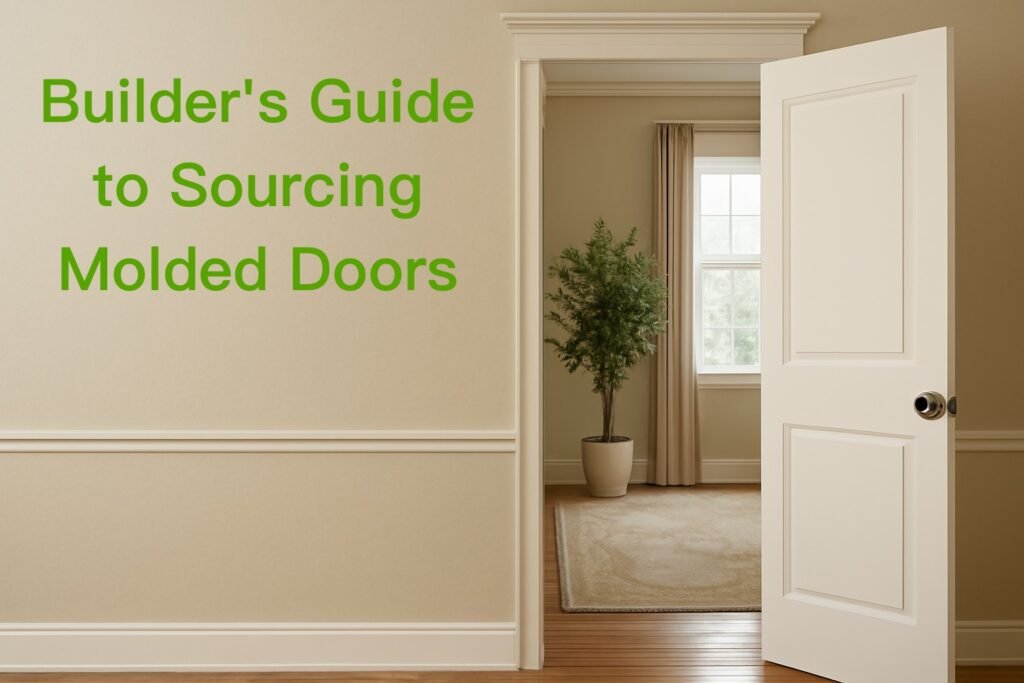
1. Material: Choosing the Right Core for Strength and Performance
The material you choose for your molded doors plays a significant role in their durability, insulation properties, and overall performance. The two most common core types for molded doors are:
- Hollow Core: Hollow core doors are lightweight and more affordable. They consist of a honeycomb cardboard core surrounded by molded panels. These doors are best suited for interior applications where durability and soundproofing are not the primary concern. They are ideal for bedrooms, bathrooms, or other low-traffic areas.
- Solid Core: Solid core doors are heavier and offer better sound insulation and strength. They are typically made with a solid wood or composite core. These doors are recommended for areas that require enhanced privacy or durability, such as exterior doors or rooms where noise control is essential.
When choosing a material, consider the specific needs of each room. For example, solid core doors are better for high-traffic areas and those that require additional security or soundproofing, while hollow core doors are a more cost-effective option for spaces like closets or non-critical areas.
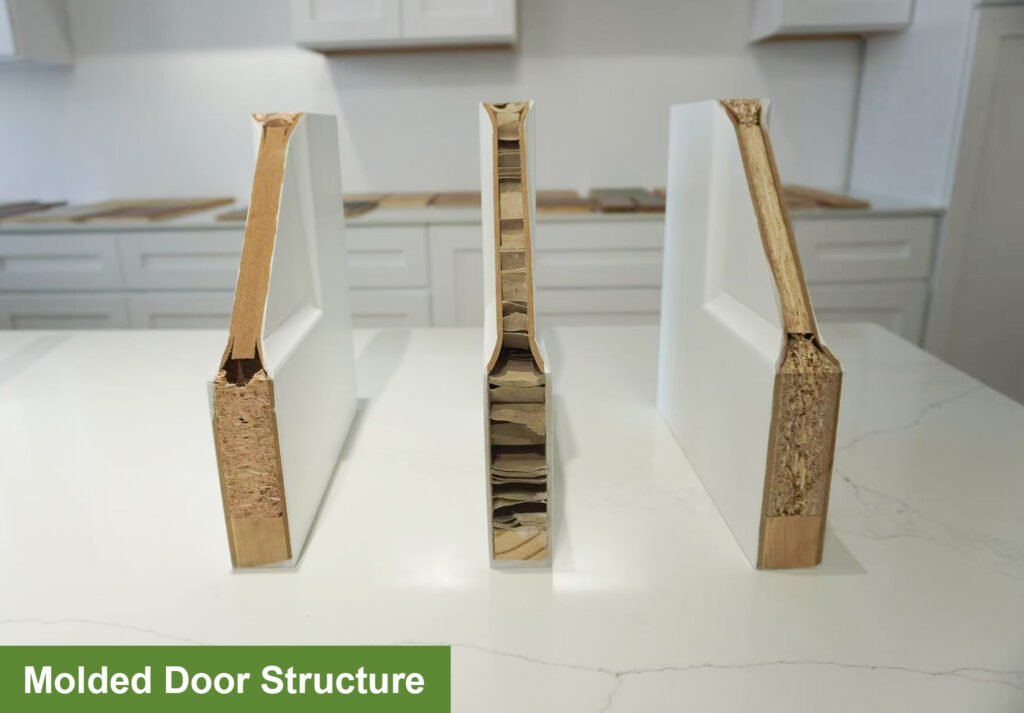
2. Dimension: Ensuring a Perfect Fit
Selecting the right dimensions for your doors is essential to ensure proper fit and function. Molded doors come in a variety of sizes, but most standard interior doors are 80 inches in height, with widths typically ranging from 30, 32, and 36 inches.
- Standard Dimensions: Standard molded doors are made to fit common door frames, so measuring your existing door frame before purchase is crucial. Most homes use 80-inch high doors, but always double-check the dimensions to avoid installation issues.
- Custom Sizes: If you’re working with non-standard frame sizes, you may need to order custom-sized doors. When measuring, ensure you account for the door’s swing clearance and consider any frame adjustments that might be needed for a seamless fit. Proper sizing ensures your door functions smoothly and aligns with the surrounding architecture.
Always remember to check the manufacturer’s specifications for the exact measurements of the door, as slight variations can affect how the door opens and closes.
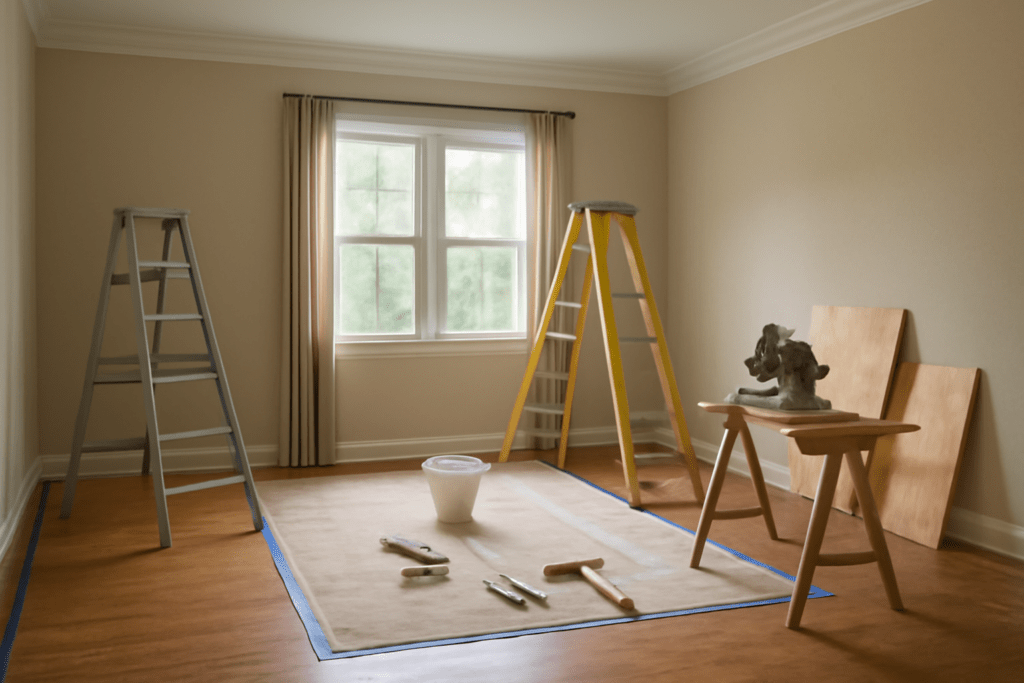
3. Style: Balancing Aesthetic Appeal with Functionality
The style of the door plays a big role in determining the overall look and feel of the space. Molded doors come in a variety of styles, allowing for flexibility in design. Here are a few common styles to consider:
- Panel Doors: Panel doors have multiple panels with a classic design that works well in traditional or formal settings. They come in various panel configurations—two, four, or six panels—and can provide a sophisticated, timeless look.
- Flush Doors: These doors have a smooth, flat surface with no panels or raised features. Flush doors are often associated with modern and minimalist interiors, offering a clean, sleek look.
- Textured or Decorative Doors: Some molded doors come with textured surfaces or decorative patterns, such as raised panel designs, which add depth and elegance to a room. These are often chosen for more decorative spaces like living rooms or entryways.
When selecting a style, consider the overall aesthetic of your home. Panel doors might work better in a traditional setting, while flush doors fit more contemporary designs. Textured or decorative doors are perfect if you want to add character and make a statement.
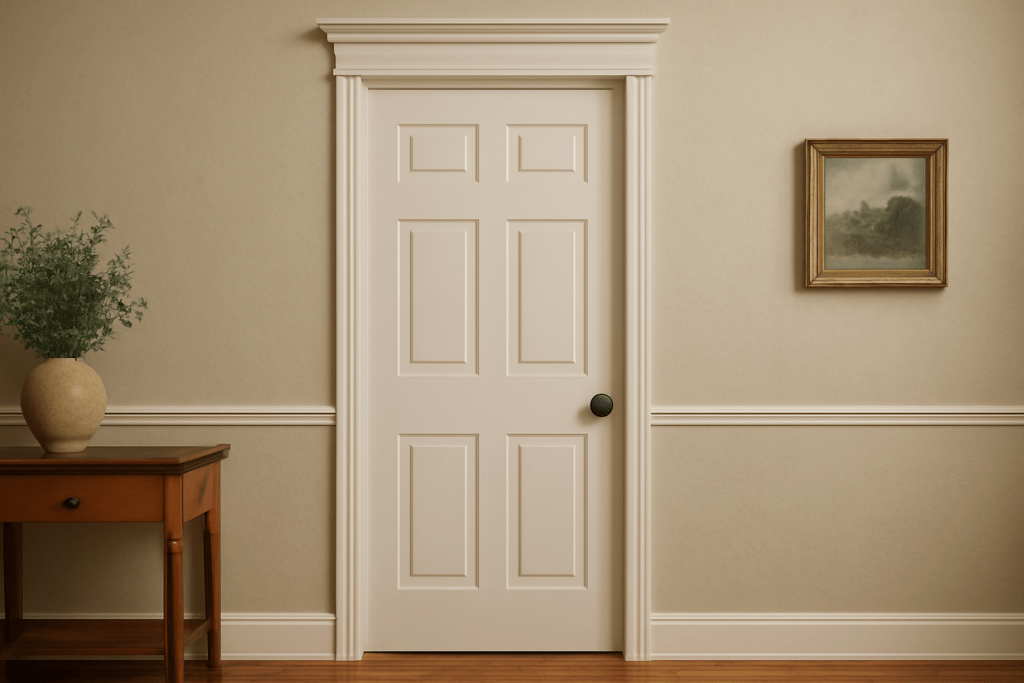
4. Finish: Enhancing Durability and Appearance
The finish of a molded door not only affects its appearance but also contributes to its durability. The right finish will protect the door from wear and tear while maintaining its visual appeal. Molded doors typically come in the following finishes:
- Primed: Many molded doors come primed and ready for painting. This gives you the flexibility to choose any color that suits your home’s design. Primed doors are often the most economical option and allow for customization, especially if you want to match the door color with your room’s theme.
- Pre-Painted: Some doors come pre-painted in standard colors, usually white, providing convenience if you need a quick solution. Pre-painted doors save time and effort, but the color choices are limited. They are a practical option if you’re working on a fast-paced project.
- Wood Veneer or Laminate: For a more premium look, some molded doors come with a wood veneer or laminate finish. This offers the appearance of natural wood without the higher price tag, providing an upscale look and feel. These finishes are ideal for areas that require a more refined look, such as living rooms or offices.
When choosing a finish, think about the door’s location and function. High-traffic areas might benefit from a more durable, pre-painted finish, while decorative rooms may be better suited to a wood veneer for added luxury.
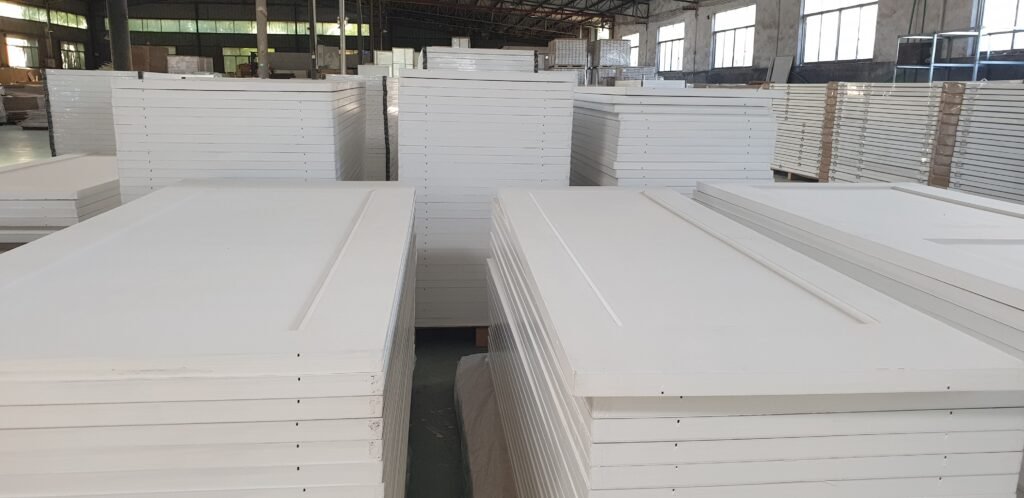
5. Choosing the Right Hardware for Molded Doors
Selecting the right hardware and accessories is essential to ensure that your molded doors function properly and maintain their durability over time. The right hardware not only enhances the look of the door but also affects its performance.
- Hinges: Ensure they can support the weight of the door. Butt hinges are most common for standard doors, while continuous or concealed hinges are ideal for heavy or high-end doors.
- Locks: Choose based on security needs. Mortise locks are great for high-security areas, while deadbolts are perfect for residential use. For convenience, smart locks offer keyless entry.
- Handles: Select a style that complements the door’s design. Lever handles are more ergonomic, while knob handles are more traditional.
- Additional Accessories: Door stops, closers, and weatherstripping enhance functionality and energy efficiency. Ensure the frame and accessories match the door style for a cohesive look.
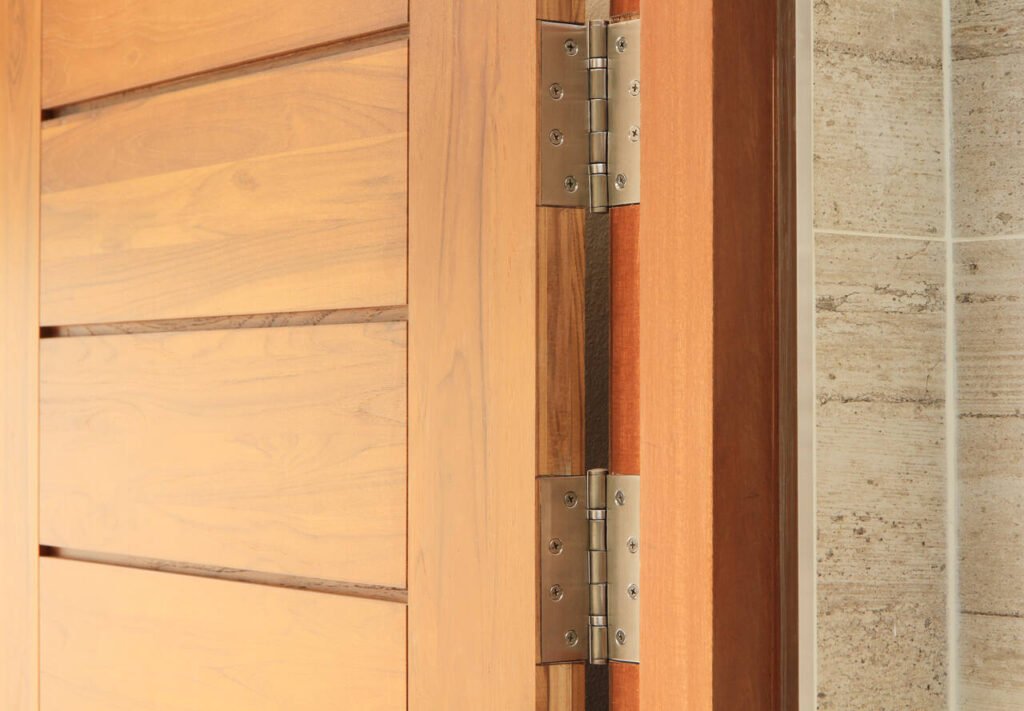
Summary
Sourcing the right molded doors involves considering factors like material, size, style, finish, and hardware. By evaluating these aspects, you can ensure the doors complement your space’s design while meeting functional needs such as durability and soundproofing.
At UWG, we specialize in manufacturing U.S. standard molded doors with over 13 years of experience. We offer builders a smooth, efficient service from design to delivery, ensuring your project stays on track. Our doors are crafted for both beauty and performance, with options to meet your exact needs.
For high-quality molded doors and expert service, feel free to reach out to us anytime.



